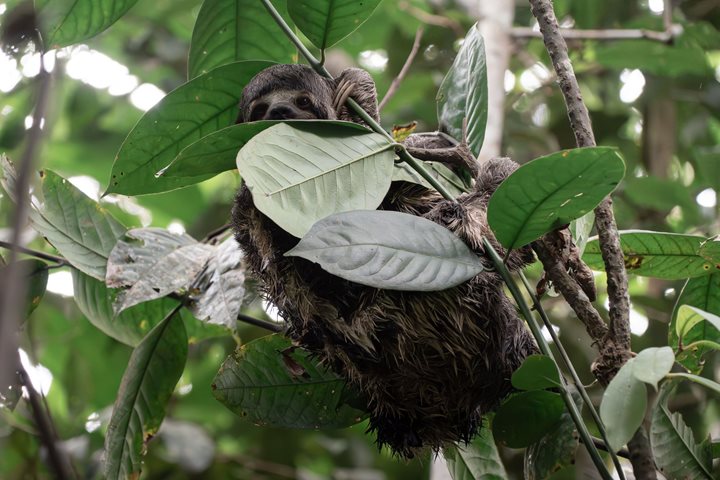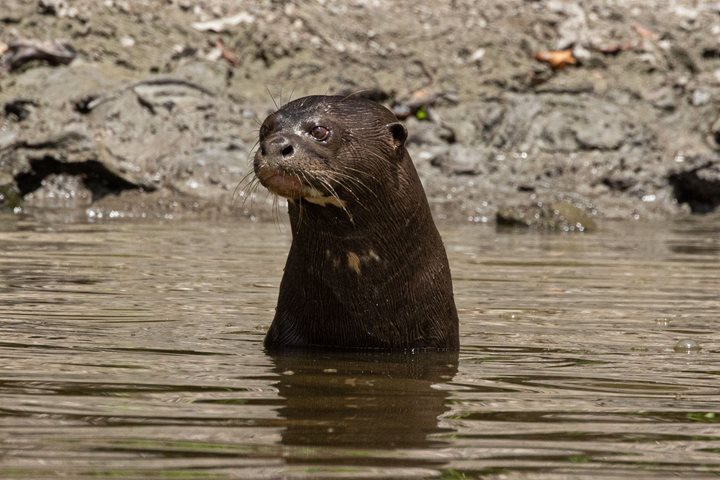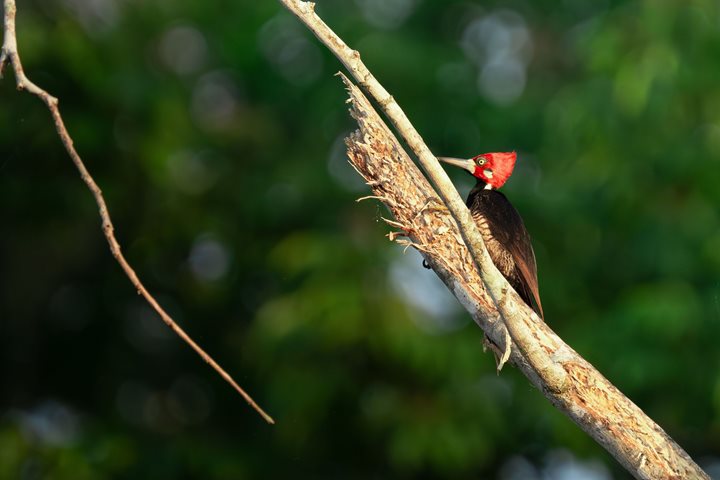Today we explored the beautiful Magdalena River during the early morning. After having enjoyed a delicious early breakfast, we boarded our skiffs and almost immediately we found the firsts of many interesting species that we watched today. Several large green iguanas were basking on top of cecropia trees, right next to three little woodpeckers, while a couple of riparian parrotlets guarded their nesting hole. The ubiquitous regulars like the great black hawk, snowy and great egrets, neotropical cormorants and black-collared hawks were everywhere. We were lucky to find several beautiful species like the red-capped cardinal, the long-billed woodcreeper and the black-tailed trogon, while a couple of slate-colored hawks posed for our cameras right in front of two much larger horned screamers behind. The birding highlight of the morning for me was a solitary king vulture that we watched soaring over the Magdalena, the largest scavenger of Amazonia! But another very special highlight awaited us, of the mammalian type, a small family group of red-bellied titi monkeys. This elusive and not very common monkey typically lives high in tall trees and keeps in the dense foliage, but this group regaled us with some great views as they moved through some open areas and we were even able to watch a female carrying a small baby on her back!
After having attended a couple of lectures on board about fishes of the Amazon and the human cultures around this region, we boarded our skiffs again to explore another caño, as the small tributary rivers are called here, the Caño Yarapa. We spent a couple of nice hours looking at more birds and had the chance to watch several wooly monkeys. Called that because of their thick fur, wooly monkeys have long prehensile tails that they use as a very dexterous fifth appendage to move effortlessly throughout the canopy. But the highlight of the day was a great sighting of a rarely seen creature, an arboreal anteater! We all watched it as it looked for termites and other insects tearing apart the bark of a thick branch and around several bromeliads, their extremely long and sharp claws clearly visible from the skiffs. What a unique opportunity!
Later, we went ashore a very short distance to watch a small family group of four spixs night monkeys watching the world with their huge eyes from the safety of their hole in a tree. A very unique monkey, it’s one of the few species of nocturnal primates in the world. What a great day full of interesting wildlife sightings, a memorable one of our journey exploring Amazonia!







